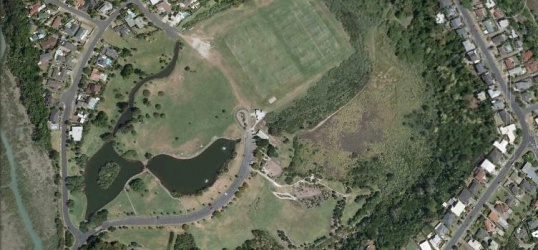Urban Green Space Biodiversity

Project: Enhancing Urban Green Space Biodiversity
Enhancing Urban Green Space Biodiversity
‘In New Zealand nature has been bountiful and bestowed great forests, beautiful flora, magnificent coastlines and mountain scenery with lavish hand. But in our towns and cities the immediate advantage of this bounty has been lost and congested areas and haphazard planning make us rue the conditions that pioneers unthinkingly created … The existence of open spaces in our cities is of supreme importance…’
(NZTPCE , 1919)
There is a significant potential for open green spaces to contribute to the enhancement of our urban biodiversity. Over one third of New Zealand’s land area is within a park or reserve, in Auckland alone there are 800 parks and reserves and the potential for these to add to the increasingly threatened ecological and aesthetical value of the city’s urban landscape is significant. The various functional adaptations of the designated areas within a green space such should be viewed holistically when considering the overall management plan of the park.
Management Plans for parks and reserves need to take into account the multifunctional uses of the site, whilst maximising the opportunities to compliment sports, recreation and conservation within a single green space (no matter what the size or scale of the site). Areas to consider in the development of a parks management plan should include:
- Embedding biodiversity objectives in the planning processes of local land use
- Promoting the expansion and accessibility of green space to the wider community
- Managing the green space in an ecologically orientated manner
- Protecting habitats and species by creating green corridors and connecting to wider networks such as gardens and neighbourhood reserves
- Including biodiversity as a procurement criteria
- Informing, communicating, involving and educating local communities and users of public parks and green space
An example of a reserve that has significant potential to contribute to the local areas biodiversity value is Onepoto Reserve (located on Auckland’s North Shore) which includes the following habitat types:
- Riparian (lakes and streams)
- Woodland
- Native bush
- Wetland/salt marsh
- Grassland
The formal recreational areas at Onepoto (i.e. sports fields) are an example of the importance of maintaining a broad overview of the requirements of green space when managing all its components. At Onepoto the management of the soccer field is intrinsically linked to that of an adjoining area of wetland. The wetland is located along the eastern edge of the field and has been recognised as a valuable remnant of the original maritime wetland that would have covered the floor of the crater before it was cut off from its original water source (the Waitemata harbour). The wetland has been historically difficult to manage with regards to maintaining the appropriate water levels within the wetland to sustain and regenerate desired plant species. In this instance the ‘pure’ conservational potential of the site has had to be compromised due to the proximity of the soccer fields and the requirements upon the Council to manage these accordingly. As a result wider consideration relating to the hydrology of the crater basin must be given in order to achieve an acceptable level of playability of the soccer field. It would not inappropriate to focus solely on one aspect of management (i.e. the conservation aspect) and ignore what is appropriate for the provision of an acceptable sports field and maximising the multifunctional requirement of the green space for the benefit of the local community.
An overarching management plan should offer the ability to compromise and consider the best solution for both entities, in the case of Onepoto this has involved:
- Reviewing the appropriate size of the wetland relative to the volume of water available
- Investigating the effects that raising the level of the wetland may have upon the quality of the playing fields (due to the hydrostatic state of the basin)
- Investigating any effects of nitrification within the wetland as a result of playing field run-off
The potential for a reserve to maximise the ecological value of urban green areas and connect habitat corridors is significant. Passive areas of Onepoto are important in connecting areas of green space with residential and suburban green corridors, these may include wider areas such as private gardens, neighbourhood reserves and tree lined streets.
In summing up, the recreational and green spaces throughout Auckland (and New Zealand) have significant potential to add to both the quality of life and ecological value of the city’s residents and landscape. Whether a private golf course or a Council operated sports field there are opportunities to enhance the value of these facilities for the benefit of both the community and the local wildlife. If the various different elements that make up a recreational green space are considered intrinsically (rather than independent of one another) the potential for conflict and polarisation of all interested parties is minimised and the overall viability and long-term value of the park to the community and enhancement of local biodiversity will be enhanced.
Note: This article was orginally produced by Will Bowden for STANZ and published in the August 2012 Newsletter
Latest News
Posted on 19 November 2019 by Default Admin